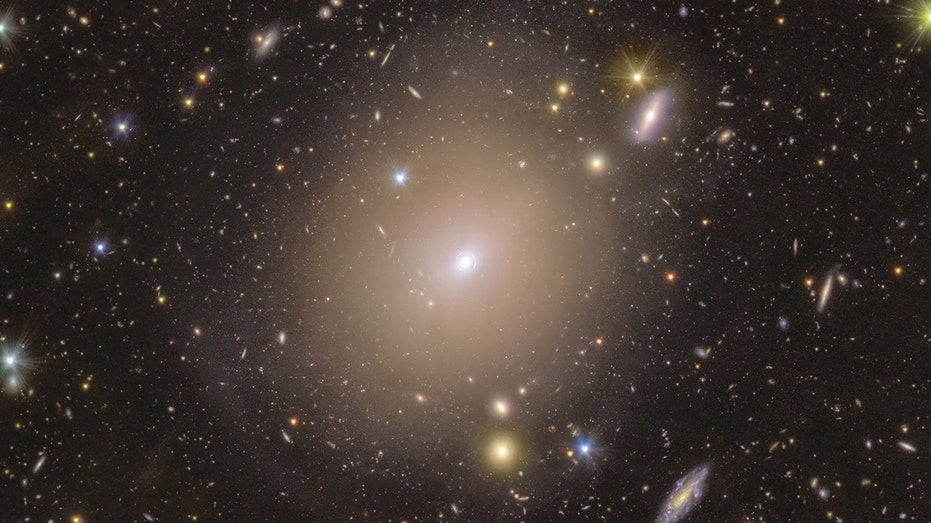ESA’s Euclid Space Telescope Unveils Stunning Einstein Ring

The European Space Agency (ESA) announced an exciting discovery from its Euclid space telescope: a remarkable Einstein ring has been detected around a nearby galaxy. This bright halo of light, a rare astronomical phenomenon, offers new insights into the universe’s mysteries.
### The Discovery of an Einstein Ring
The Einstein ring was captured in stunning detail, encircling a galaxy located approximately 590 million light-years away. Although this distance is immense, it is relatively close by cosmic standards, where a single light-year spans about 5.8 trillion miles.
-
Climate Change Exposes Vulnerabilities in America’s Medical Supply Chain

-
Unlock Your Phone’s Battery Potential: 5 Hidden Drainers You Can Fix Today

-
Cheap Black Friday Deals: Are You Sacrificing Your Privacy?

-
CEE Venture Capital Summit 2026: Premier Invitation-Only Event for VC Fund Managers in Central and Eastern Europe

Astronomers have been familiar with the galaxy, known as NGC 6506, for over a century. However, the appearance of this brilliant glowing ring was entirely unexpected. This discovery highlights the unique capabilities of the Euclid telescope, which was launched on July 1, 2023, from Cape Canaveral, Florida, embarking on a six-year mission to explore the dark universe.
### Early Testing and Surprising Findings
Before delving into its extensive survey of the cosmos, the Euclid team needed to ensure all systems were operational. In September 2023, during the initial testing phase, the telescope transmitted images back to Earth. Although the images were intentionally out of focus, one caught the attention of Euclid Archive Scientist Bruno Altieri.
“I analyze the data from Euclid as it arrives,” said Bruno in an ESA press release. “Even from that first observation, I could see something special. After further observations of the area, we confirmed the presence of a perfect Einstein ring. For someone passionate about gravitational lensing, this was truly remarkable.”
### Understanding Gravitational Lensing
Einstein rings are considered “extremely rare phenomena.” They occur when light from a distant galaxy passes by a foreground galaxy on its way to the observer. The gravitational pull of the foreground galaxy acts like a lens, bending the light rays. When the background galaxy, lensing galaxy, and observer are perfectly aligned, the light forms a ring, known as an Einstein ring.
### A Unique Scientific Opportunity
Conor O’Riordan of the Max Planck Institute for Astrophysics emphasized the significance of this discovery: “All strong lenses are special due to their rarity and exceptional scientific value. This particular ring is especially notable because it is so close to Earth and its beautiful alignment.”
Einstein rings stem from Albert Einstein’s general theory of relativity, which predicts that light bends around massive objects in space. This phenomenon sometimes enables scientists to observe light from distant galaxies that would otherwise remain hidden.
### A Historic Observation
Valeria Pettorino, ESA’s Euclid project scientist, expressed the intrigue of discovering an Einstein ring within a well-known galaxy first identified in 1884. “The fact that this ring was never observed before showcases the power of Euclid. It uncovers new findings even in areas we thought were well understood, providing encouragement for the future of the mission.”
### Looking Ahead: The Future of the Euclid Mission
As the mission progresses, scientists anticipate that Euclid will enhance our understanding of gravity in the universe and shed light on the enigmatic nature of dark energy and dark matter. The telescope aims to map over a third of the sky and observe billions of galaxies, extending its reach up to 10 billion light-years away.
ESA expects that Euclid will discover around 100,000 additional strong lenses throughout its mission. Finding one so close to home, however, is described as “astonishing.” O’Riordan summarized the potential impact of the mission: “Euclid is set to revolutionize the field, providing us with an unprecedented wealth of data.”
This groundbreaking discovery underscores the transformative capabilities of the Euclid telescope, paving the way for new astronomical insights and understanding of our universe.
